The North Pacific is a tempestuous neighbor, known to turn even more erratic with the coming of winter. That’s when storms from the Pacific spill into Alaska’s island archipelagoes and mainland mountain ranges with gale-force wind and drenching squalls. Snow and more snow, measured in yardsticks.
Watch the weather off the coast of the Alaska panhandle on your favorite weather app and see for yourself: When the North Pacific revs its storm engine, watch out.
All that rain and snow add up to somewhere north of 100 inches of precipitation in a year—even twice that in certain locales. (Rainy Seattle, the evergreen Emerald City 700 miles to the south, averages just 37 inches.)
Living and working in a place like this calls for waterproof everything. For scientist Sophie Gilbert, who spent four recent summers tracking the movements of Sitka black-tailed deer in the Tongass National Forest in a project with the Alaska Department of Fish and Game, that means notebooks with waterproof paper. Wool, never cotton. Xtra Tuf rubber boots, a heavy rubber raincoat and rain bibs—basically, the working uniform of an Alaska commercial fisherman.
“This is the wettest place you’ve ever been,” says Gilbert, now a professor of wildlife biology at the University of Idaho. “It sounds like something you’d have to go to the tropics to see, but this really is (North) America’s rainforest in the truest sense. And just like a tropical rainforest, the trees can be absolutely massive.”
All that life-giving rain turns to snow when winter closes in: a real-world snow globe in the hand of a giddy toddler who won’t put it down. These deep winter snows don’t go unnoticed. After collaring 40 deer with GPS tracking devices on Prince of Wales Island, Gilbert can see it in how deer move through the forest in winter—the hardest season.
At 2,500 square miles, Prince of Wales Island is a big, wild place—more than ten times the size of Manhattan—a place where Tlingit and Haida people have lived for millennia, where kids play in schoolyards surrounded by epic vistas, and where a community of traditional carvers turns out beautiful totem poles from giant cedars.
Commercial fishing boats ply the waters and fill local harbors. Logging trucks rumble along gravel roads.
And in the forest, there are Sitka black-tailed deer—but populations are declining. Many fear a crash.
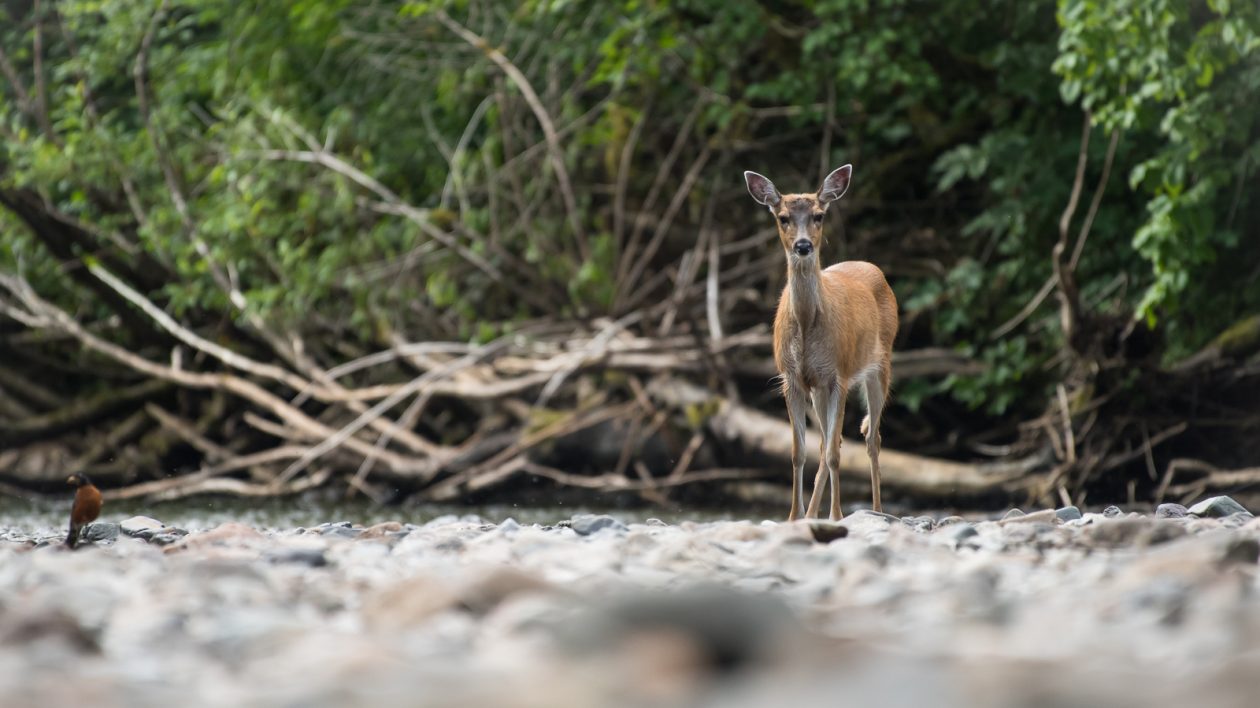
Scientists are taking a hard look at the forest and asking if it can continue to sustain Sitka black-tailed deer as it always has. What’s clear is that not all areas of the forest offer what deer need in a harsh winter of deep snow.
“The old trees are huge and have an incredibly strong canopy that can hold as much snow as the weather throws at them. They don’t shed (snow). They’re just goliaths,” says Colin Shanley, a wildlife biologist with The Nature Conservancy in Alaska.
Because the natural world is a web of knock-on effects, the phenomenon of snow-in-the-tree-canopy (remember, terrific amounts of snow) is especially consequential for Sitka black-tailed deer, what scientists say is the Tongass forest’s primary herbivore.
These animals are browsers, nibbling plants on the lush forest floor but also as high as they can reach on their hind legs—a menu ranging from blueberry bushes to flowering plants like skunk cabbage and dogwood.
“Everything’s all good in the summer. There’s plenty of food. It’s warm. They’re not environmentally stressed,” Shanley says. “Winter is the limiting season for deer populations. In the winter they have to stay warm and feed constantly. That’s when you’re really testing the quality of your habitat. You want them to have habitat where if there’s a lot of snow, there are big trees to shelter them and prevent the snow from getting too deep.”
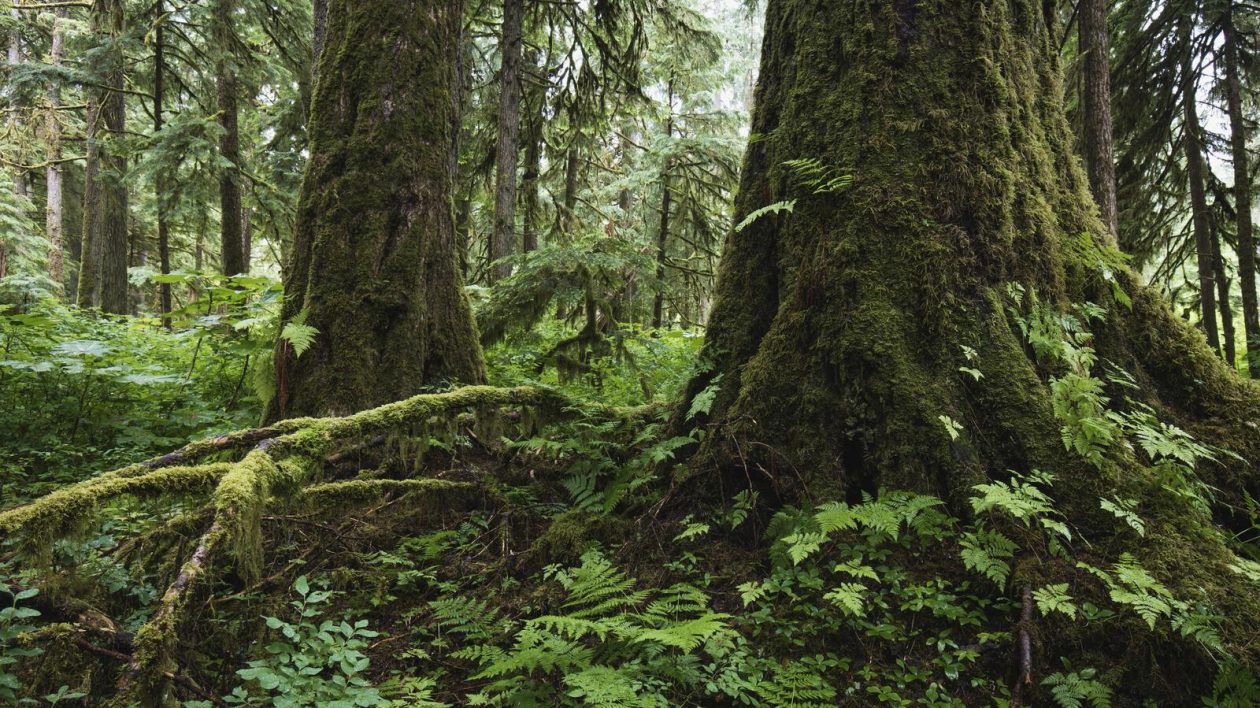
Deer and Their Changed Forests
The temperate rainforest on Prince of Wales Island isn’t one giant verdant cathedral of primeval old-growth forest. It’s a mix of habitats, including wetlands and peat bogs. Plus, industrial-scale logging has cut trees for more than 70 years, with plenty of roads and recent clearcut areas where younger trees are growing back, and even more old clearcuts with thick canopies and not much deer forage in the understory.
What about “making more” habitat by restoring working forests? Sure, but where?
Questions like these prompted Shanley to lead an interdisciplinary team of scientists from Alaska Department of Fish and Game, University of Idaho and the Tongass National Forest in a sophisticated exercise to model how and where deer move through the forest in winter. Their research, “Using LiDAR and Random Forest to improve deer habitat models in a managed forest landscape,” was just published in the peer-reviewed journal, “Forest Ecology and Management.”
Their work is noteworthy for the way it elegantly marries two elements of modern-day science to uncover new understandings about deer and their habitat. That is, they’ve combined the hard-earned observations of a rain-soaked field biologist—that’s Gilbert—with tremendously powerful new digital tools—namely, high-resolution lidar mapping—that captures a detailed snapshot of the condition of the forest.
“Combining the two is where the power comes from,” Gilbert says.
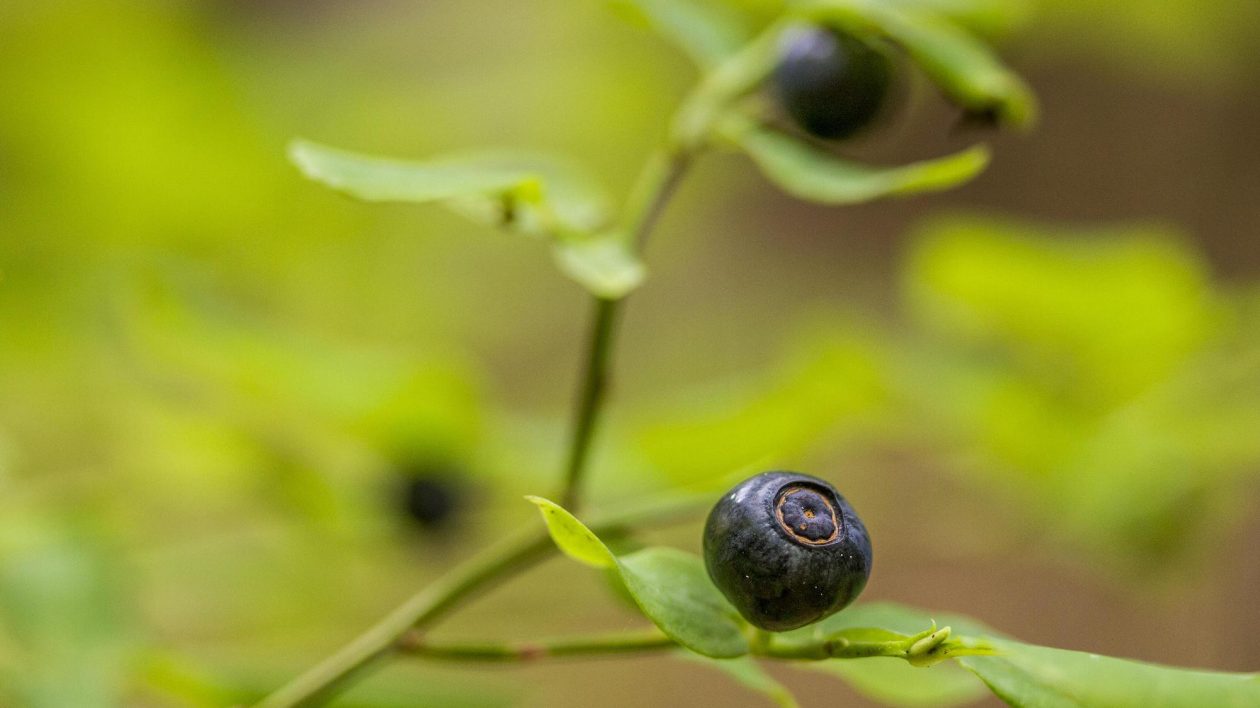
People and Deer
In remote Southeast Alaska communities, some food is bought in grocery stores. But most households also harvest traditional foods from the sea and surrounding forest—think wild salmon, berries, shellfish and deer. Some may see it as a subsistence harvest. A way to fill the pantry. It might also be called a way of life tied to vibrant culture and tradition in the Tlingit, Haida and Tsimshian villages here.
Sitka black-tailed deer also are a primary prey for the apex predator in the forest, the Alexander Archipelago wolf. Its population is declining, too. The U.S. Fish and Wildlife Service is reviewing the animal’s status in response to a petition to add Endangered Species Act protections to the Alexander Archipelago wolf.
The fate of the wolf and the Sitka black-tailed deer—in the classic relationship of predator and prey—are inextricably linked to a deer’s chances of surviving a harsh winter in the forest.
In the places with the most wildlife—ecologically valuable, lower-elevation forests—over the course of a half century, crews working for timber companies logged 67% of the best deer habitat. In these places, with the protective tree canopy lost, the deer-forest-snow phenomena changed. Trees do grow back, but scientists say it takes at least 150 years for a forest to regrow and take on some semblance of old-growth forest again.
This latest science offers new information, rooted in the Tongass, to aid communities that are already restoring forests in Southeast Alaska. TNC is a partner in these efforts. The Hoonah Native Forest Partnership and the Keex’ Kwaan Community Forest Partnership, in the villages of Hoonah and Kake, respectively, have employed crews of local Indigenous guardians to restore areas that are important for traditional community uses. The new Seacoast Trust supports these and other efforts focused on community sustainability.
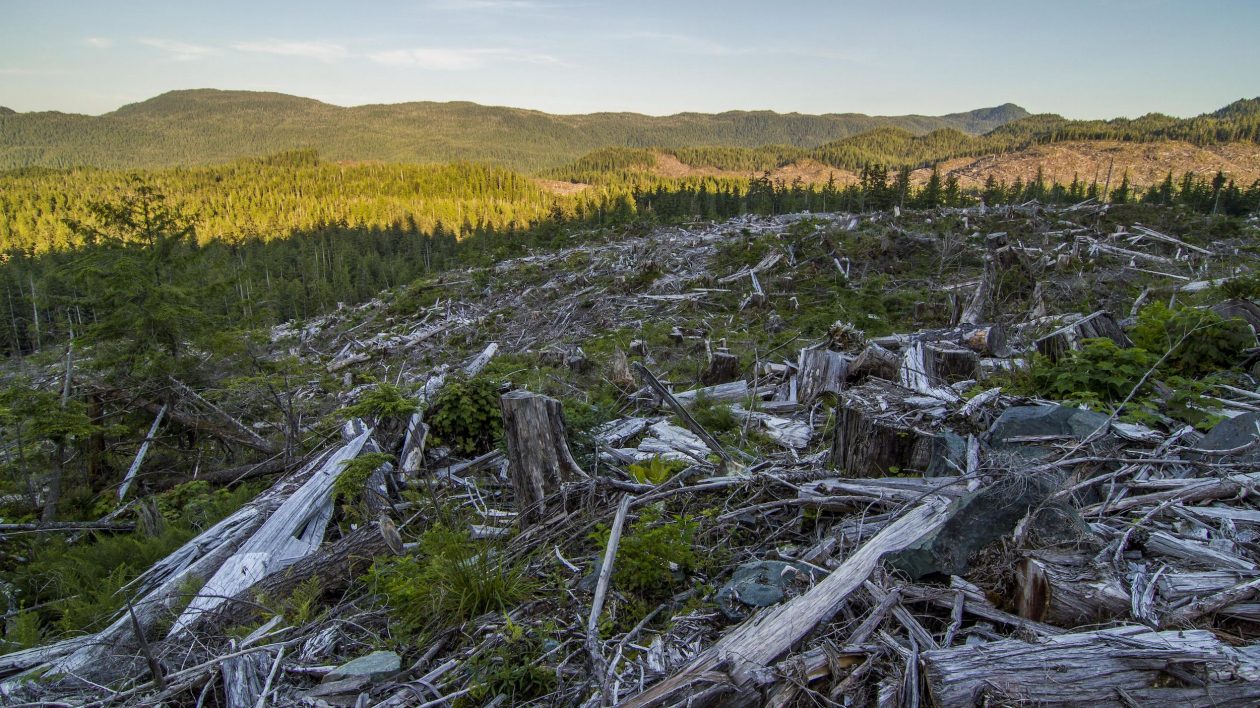
For now, much of the Tongass’ most productive forestland is a mosaic of humanity’s own creation, with ancient old-growth at one end of the spectrum and fresh clear-cuts at the other. In between, hundreds of thousands of acres of young trees offer little safety for Sitka black-tailed deer.
“These young trees, when they get snowed on, they don’t hold snow. The snow just sheds onto the ground, period. So everything’s covered,” Shanley says.
Bear in mind, the Sitka black-tailed deer fills a niche altogether different from the adaptable and familiar white-tailed deer of forests and fields—yes, even suburban golf courses—ranging across much of North America.
The Sitka black-tailed deer’s range extends throughout the forests of Southeast Alaska and British Columbia. They’re unlikely to show up in the fringes of human settlement.
In fact, their numbers are directly tied to the health of the places where you find them: the temperate coastal rainforest, with its mix of towering Sitka spruce, Western hemlock, Western red cedar and Alaska (yellow) cedar.
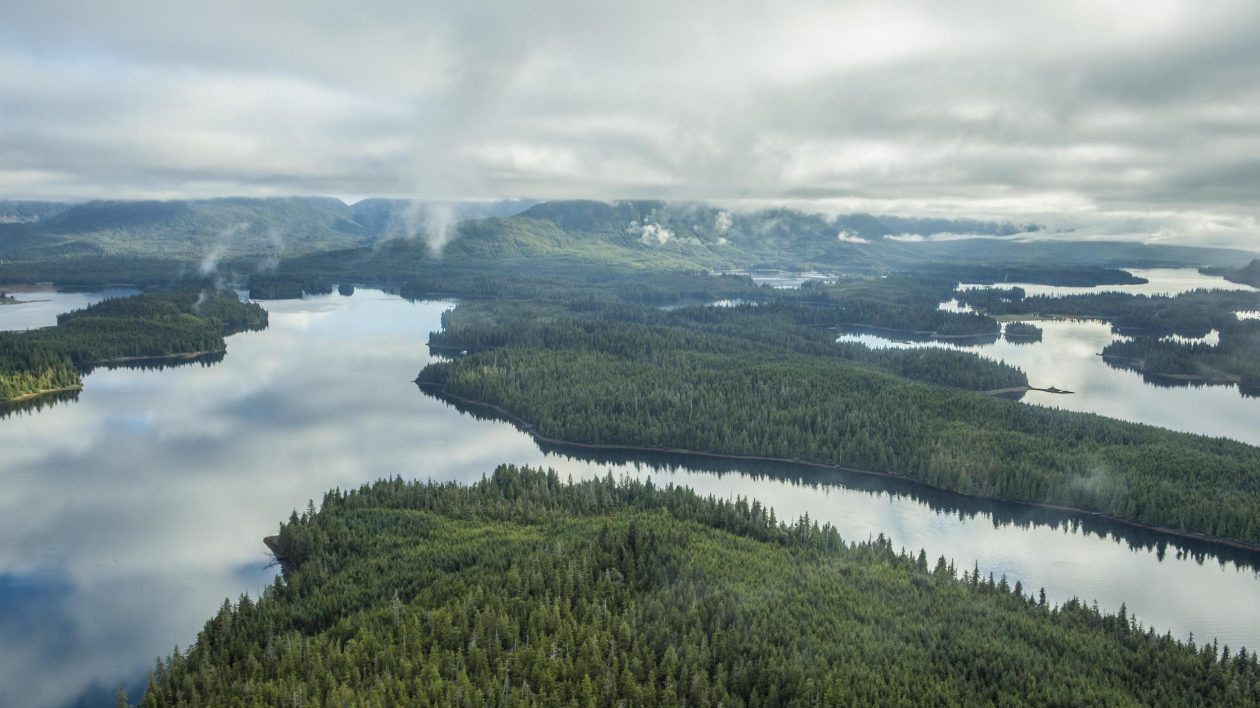
Can a Working Forest Sustain Healthy Deer Populations?
A successful scientific venture relies on each researcher contributing their own expertise, or to put it another way: collaboration.
“It’s hard to emphasize enough how important that is for conservation. Rarely is it just one person,” says Daniel Eacker, a biologist with the Alaska Department of Fish and Game and a study coauthor.
And without collaboration across disciplines, bigger, more ambitious questions are left unasked—stunting the scientific process and the possibility of finding solutions to environmental challenges.
“Unless you collar every deer on Prince of Wales Island, you’re only going to know what those deer do in those six watersheds. And there’s hundreds of watersheds. And so the idea is to extrapolate where those 40 deer go. That allows you to extrapolate across Prince of Wales Island or all of Southeast (Alaska),” Shanley says.
And this is where the experimenting began. Would it work? Shanley says that as the group came together, he wasn’t sure it would.

Yet the quest for knowledge—how can a working forest sustain healthy deer populations?—demanded they try. They knew they had, at their fingertips, the most sophisticated tools for predicting animal behavior ever available.
Even if they weren’t the traditional tools of the field biologist, borrowed as they were from the fields of medical research and engineering, an aptitude with the sophisticated tools capable of crunching big data is now commonplace in the conservation field.
And in the end, peer reviewers of their research agreed: Their research produced a better model to capture deer movement in the forest, yielding more accurate and high-resolution results.
“The pace at which we are learning more about what wildlife need is incredible, and that’s good because they’re in trouble a lot of the time,” Gilbert says. “So we better be getting our act together and learning more.”
But not simply learning more, Gilbert adds. Doing more. For people who live here, for the forest and for the future of the Sitka black-tailed deer.
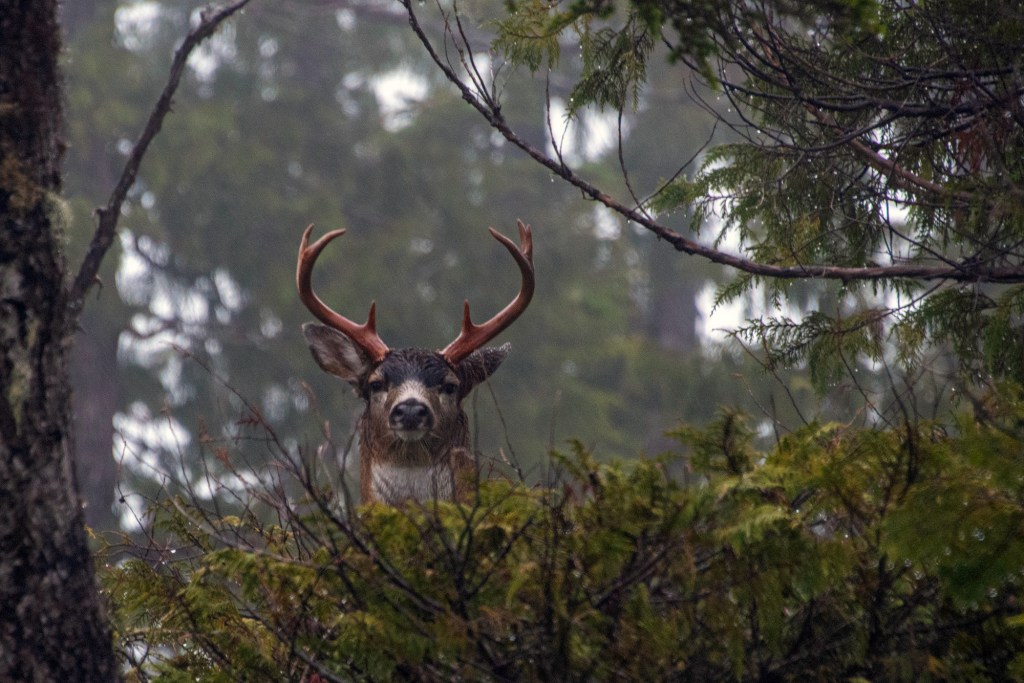



We work with The Nature conservancy reforesting with different land owners. We have spent more time and energy in the young growth trees then anyone on POW. My take is the trees need to be managed at young age 12-20 years depending on location. Before the understory gets choked out and before the dominant trees lose their growth momentum. You want big healthy trees to mitigate the snow pack on the ground then they need the spaced out early. Otherwise you have tall trees struggling to maintain even 40% of healthy tree foliage. Also 35-40 year old trees hold snow very well, if it wasn’t previously pre commercially thinned. The foliage up the trees are robust and leave large snow free areas around the trees. We’ve managed many sites that were thinned at 15years and we Basel prune at 35. What is left is a beautiful representation of young old growth forest. However with out the early management fallowed up with the secondary management, you will not achieve the same results. Many land owners are behind their land management and attempt to PCT on trees over 25-30 years. At this point the understory foliage already choked out and no longer present but dead brush stems producing no foliage.
Where can we read the findings of this study?